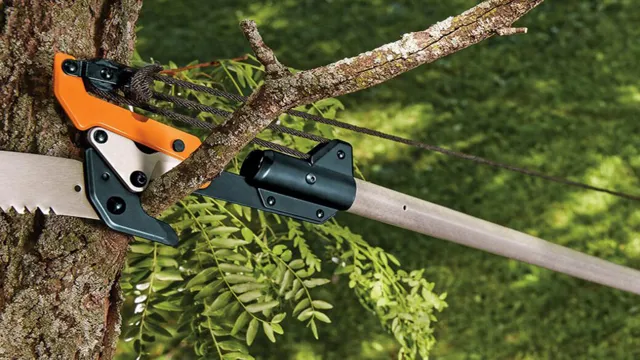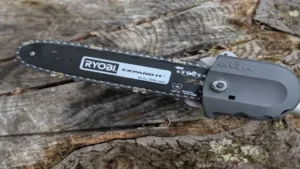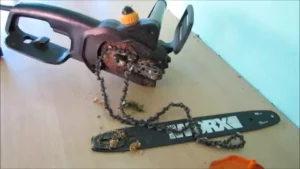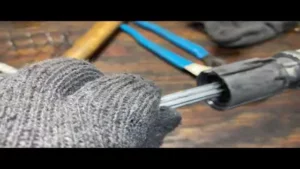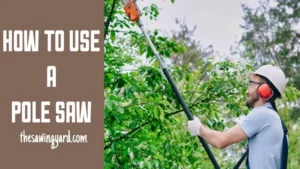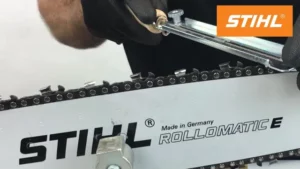Have you ever had to trim trees in your yard? If so, you probably know how tedious and potentially dangerous it can be. Using a pole saw and pruner is a great solution, but it’s important to know how to use them safely. These tools make it easier to reach higher branches without needing to use a ladder or climb the tree.
However, they can also cause serious injury if not used properly. In this blog, we’ll share some tips on how to use a pole saw and pruner safely, so you can keep your trees looking great without putting yourself at risk.
Understanding Pole Saw and Pruner Components
Learning how to use a pole saw and pruner effectively starts by understanding each component of the tool. A pole saw is made up of a saw blade and a long pole for reaching higher branches, while a pruner consists of two sharp blades that cut the branches as you squeeze the handles together. Both tools have unique features that make them suitable for various pruning tasks.
With a pole saw, you can adjust the angle of the blade to make clean, precise cuts, while a pruner allows you to trim smaller branches with precision and accuracy. It’s important to note that using these tools requires proper safety precautions, such as wearing gloves, sturdy shoes, and eye protection. By familiarizing yourself with these essential components and observing safety guidelines, you can make your pruning tasks more manageable and efficient.
Blade and Chain
Pole Saw and Pruner Blade and chain are two essential components of a pole saw and pruner. The saw blade is designed to cut through thicker branches, while the pruner chain is used for thinner branches. The blade and chain’s material and quality play a crucial role in their performance, efficiency, and longevity.
For instance, blades made of high carbon steel are stronger, sharper, and more durable than those made of low-grade steel. Similarly, the chains’ cutting teeth should be sharp and evenly spaced to ensure clean and precise cuts. Additionally, the length and curvature of the blade and chain determine their reach and maneuverability.
Longer blades and chains are suitable for high branches, while curved ones enable you to cut at different angles. Understanding your pole saw and pruner’s components helps you choose the right tool for the job and use it correctly. By investing in quality, well-maintained blades and chains, you can ensure that your pole saw and pruner work effectively and efficiently in the long run.

Handle/Trigger
The handle or trigger is a key component of both pole saws and pruners. It’s the part that you grip onto and use to control the cutting action. The handle is typically made of durable materials like plastic, rubber, or even metal to ensure it can withstand the pressure that comes with pruning.
The shape and size of the handle may vary from one model to the next, but they’re designed with ergonomics in mind to provide a comfortable grip. The trigger, which is often integrated into the handle, is what activates the cutting mechanism. Pressing down on the trigger brings the blades together for a clean cut.
The trigger should be easy to operate, even when wearing gloves, for safe and accurate pruning. Whether you’re using a pruner or a pole saw, the handle/trigger combination is what gives you the control you need to make precise cuts without damaging the surrounding vegetation.
Extension Pole
When it comes to pole saw and pruner components, one essential part to consider is the extension pole. An extension pole serves as the backbone of your pole saw and pruner, as it allows you to reach high branches and limbs with ease. It is typically made of lightweight materials such as aluminum or fiberglass to ensure you can maneuver it without difficulty.
The length of the extension pole is adjustable, enabling you to customize the height depending on your needs. Some extension poles also come with a locking mechanism to secure it in place. Think of the extension pole as an arm extension that allows you to reach those unreachable areas, just like a superhero with their extendable arms.
With the extension pole, you won’t need to climb a tree or use a ladder, which can be dangerous. Instead, you can work from the ground and still get the job done quickly and efficiently. Plus, the extension pole also saves you time and effort compared to using manual pruning tools.
It’s an essential component of pole saw and pruner that you shouldn’t overlook. Remember, an extension pole can make all the difference in tree trimming.
Preparing for Use
If you’re new to using a pole saw and pruner, there are a few things you should do to prepare for use. First, you’ll want to make sure the blade is sharp, as a dull blade can make the saw difficult to use and can even damage trees. Check the manufacturer’s instructions for how to sharpen the blade correctly.
Next, you’ll want to make sure your saw is secure and that you’re using it safely. This may involve adjusting the height of the pole or wearing safety gear like gloves and goggles. Be sure to take your time and work carefully to avoid accidents.
Finally, before you start using your saw, take a moment to think about what you’ll be cutting and how you’ll need to position yourself to get the best results. With a little bit of practice and preparation, you’ll be ready to use your pole saw and pruner like a pro.
Inspecting the Tool
Inspecting the tool is a crucial step in preparing it for use. Before using any tool, it’s essential to ensure it’s cleaned and maintained to guarantee safety and effectiveness. To start, carefully examine the tool’s various components, checking for any signs of damage, rust, or cracks.
Inspect the blade or cutting edge, ensuring it’s free from nicks and chips. Next, wipe down the tool with a damp cloth, focusing on any hard-to-reach areas where dirt and debris can accumulate. If necessary, disassemble the tool and clean each part separately, taking care not to over-lubricate any moving parts.
Ensuring your tool is in good condition before use can help prevent injury and prolong its lifespan. So, take the time to inspect and clean your tool before jumping in – it can make all the difference in the long run.
Clearing the Work Area
When it comes to clearing the work area, taking the time to prepare can make a big difference in productivity. The first step is to remove any clutter or unnecessary items that may be taking up space and causing distractions. This can include paperwork, empty water bottles, or even personal items like jackets or bags.
Once the area is cleared, it’s important to gather all necessary tools and materials for the task at hand so everything is within reach. This includes pens, pencils, notepads, calculators, and any other relevant equipment. By taking these simple steps and preparing the work area, you can ensure a more efficient and focused approach to your work.
So, take a moment to clear the clutter and gather your tools, then sit down and start working towards your goals.
Using the Pole Saw and Pruner
If you’re a homeowner looking to maintain your garden or landscape, you’ve probably heard of a pole saw and pruner. These tools can be a lifesaver when it comes to cutting branches or trimming shrubs that are too high to reach with a regular saw or pruner. To get started using a pole saw and pruner, first, make sure you have all the safety gear necessary, such as gloves, safety glasses, and a hard hat.
Next, extend the pole saw or pruner to the desired length by following the manufacturer’s instructions. Position the tool where you want to cut, making sure the blade is angled correctly. Then, use slow, steady pressure to cut through the branch or stem.
Remember to maintain proper balance while using the tool, especially when extending it to its full length. With a little practice, you’ll be able to master using the pole saw and pruner for all your landscaping needs.
Positioning the Saw/Pruner
When it comes to using a pole saw or pruner, proper positioning is essential for both optimal safety and effective cutting. Before beginning, make sure the saw or pruner is adjusted to your proper height and grip preference. When positioning the saw or pruner on the tree branch, locate the branch collar, which is the swollen area at the base of the branch.
Place the saw or pruner blade on the side of the branch opposite to the collar and cut at a 45-degree angle away from the collar. This helps the branch to heal faster and prevents damage to the tree. Always keep both hands on the tool and be aware of your surroundings, ensuring there are no power lines or other hazards nearby.
By properly positioning your saw or pruner, you can ensure a successful and safe pruning experience.
Starting the Saw/Pruner
Starting the saw/pruner can be an intimidating task, especially for beginners. For pole saws, the first step is to assemble the tool according to the manufacturer’s instructions. Once assembled, hold the saw firmly with both hands and engage the safety lock.
Then, pull the starter cord to get the engine running. It’s important to note that you should never start a pole saw while it’s pointed downwards as this can cause oil to flood the carburetor and compromise the engine. For manual pruners, ensure that the blade is sharp and clean before use.
To start, grip the handle firmly with one hand and the other hand on the blade. Apply slight pressure and make a cutting motion to remove smaller branches. Larger branches may require a saw or pruner with a longer blade.
Remember to always wear protective gear such as gloves and eye goggles when operating these tools. With a bit of practice, starting a saw or pruner will become second nature and you’ll be able to tackle even the toughest pruning jobs with ease.
Cutting Techniques
When it comes to cutting techniques in gardening, the pole saw and pruner are two essential tools that come in handy. The pole saw is useful for reaching high branches that cannot be easily accessed with a regular saw. Its long handle allows you to trim branches while standing on the ground, reducing the risk of falls.
The pruner, on the other hand, is ideal for cutting thin branches and stems. It features sharp blades that make precise cuts, minimizing the damage done to the plant. When using the pole saw or pruner, it is important to always wear protective gear such as gloves and safety glasses to prevent injuries.
Additionally, make sure to clean and maintain your tools regularly to keep them in good working condition. By using these cutting techniques with the pole saw and pruner, you can keep your garden looking neat and well-maintained all year round.
Maintenance and Storage
If you’re looking to keep your yard looking neat and tidy, then a pole saw and pruner can be your best friends. But to get the most out of these tools, you need to know how to use them properly and take care of them. When using a pole saw, it’s important to always keep the saw blade sharp and to take your time when cutting through branches.
Make sure to keep the saw blade clean and free of debris by wiping it down after each use. As for the pruner, you’ll want to keep the blades clean and lubricated, as this will help prevent rusting and keep the tool working smoothly. When it comes to storage, always keep your pole saw and pruner in a dry place, free of moisture and extreme temperatures.
This will help prolong the life of your tools and ensure they’re ready to go when you need them. Overall, with a little bit of maintenance and proper storage, your pole saw and pruner will be reliable tools that make yard work a breeze.
Cleaning the Tool
Maintaining and properly storing your cleaning tool is essential to ensure its long-lasting use. After each use, it is crucial to clean the tool properly and store it in a dry and safe place. To clean the tool, first, remove any excess dirt or debris with a dry cloth.
Then, use a suitable cleaning agent specified for the type of tool you are using, and follow the instructions carefully. Make sure to rinse the tool thoroughly with clean water and dry it completely before storing it. Storing the tool in a dry and secure place will prevent rusting and damage of the tool, prolonging its life.
Avoid storing the tool in damp or humid areas as this can cause mold or rust growth. You should also keep the tool out of direct sunlight or extreme temperatures, which can also damage the tool. By maintaining and storing your cleaning tool correctly, you can ensure its maximum durability and efficiency.
Storing the Tool Safely
When it comes to owning and using tools, proper storage and maintenance are crucial for their longevity and safety. It’s important to store your tools in a secure, dry location to prevent rust and damage. If your tool comes with a case, use it to keep the tool protected and organized.
Alternatively, you can hang larger tools on hooks or keep them in a tool chest with compartmentalized drawers. Keep in mind that some tools, such as saw blades, should be stored separately to prevent dulling or cracking. In addition to storage, regular maintenance is also necessary to keep your tools in good working condition.
Clean them after each use and inspect them for any damage or wear. Replace any worn or damaged parts and sharpen blades as needed. By taking the time to store and maintain your tools properly, you can ensure their longevity and avoid any accidents or injuries.
Conclusion
Now that you know how to use a pole saw and pruner, you can channel your inner lumberjack and tackle those hard-to-reach branches with ease. Remember to take necessary safety precautions, freshly sharpen your tools, and invite a friend or family member to assist you. With your new skills, you’ll impress your neighbors with your impressive tree-trimming abilities and might even become the go-to arborist in your community.
Happy trimming!”
FAQs
What is a pole saw and pruner used for?
A pole saw and pruner are used for trimming and pruning tree branches that are too high or out of reach.
How do you use a pole saw and pruner?
To use a pole saw and pruner, attach the saw blade to the end of the pole, adjust the height of the pole to reach the branch, and use a sawing motion to cut through the branch. The pruner can be used for smaller branches by squeezing the handles to make the cut.
What safety gear should be used when using a pole saw and pruner?
It is recommended to wear eye and ear protection, sturdy shoes, and gloves when using a pole saw and pruner. Additionally, a hard hat and safety harness may be necessary if working at an elevated height.
How often should the blades be sharpened on a pole saw and pruner?
The blades of a pole saw and pruner should be sharpened regularly to ensure efficient and clean cuts. It is recommended to sharpen the blades after every use or every few uses, depending on how often it is being used.
Can a pole saw and pruner be used for cutting down a tree?
No, a pole saw and pruner are not designed to cut down trees. They are only meant for trimming and pruning tree branches.
What types of trees can a pole saw and pruner be used on?
A pole saw and pruner can be used on most types of trees, but it is important to consider the size and thickness of the branches being cut. It may not be suitable for larger branches or hardwood trees.
How do you maintain a pole saw and pruner?
To maintain a pole saw and pruner, keep the blades clean and dry after each use, lubricate the moving parts, and store it in a dry and secure location. Regularly inspect the tool for any wear and tear, and replace any damaged or worn parts.
